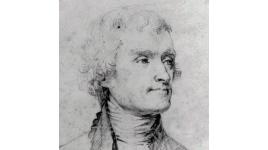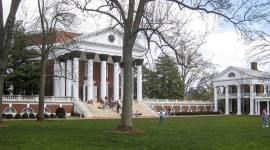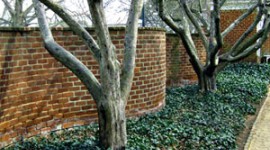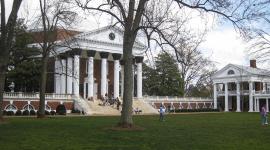UVA and Monticello Reinterpret a Complex Past
On April 18, 2019, a talk titled “UVA and Monticello World Heritage Site & Evolving Historic Interpretation” was given at the National Building Museum in Washington, D.C. The presentation reflected on recent curatorial efforts at Monticello and the University of Virginia (UVA), two prominent sites connected to the legacy of Thomas Jefferson, to reconcile past ties to slavery. Located in Charlottesville, Virginia, the iconic landscapes together form a non-contiguous UNESCO World Heritage Site (1987) and a Site of Memory.
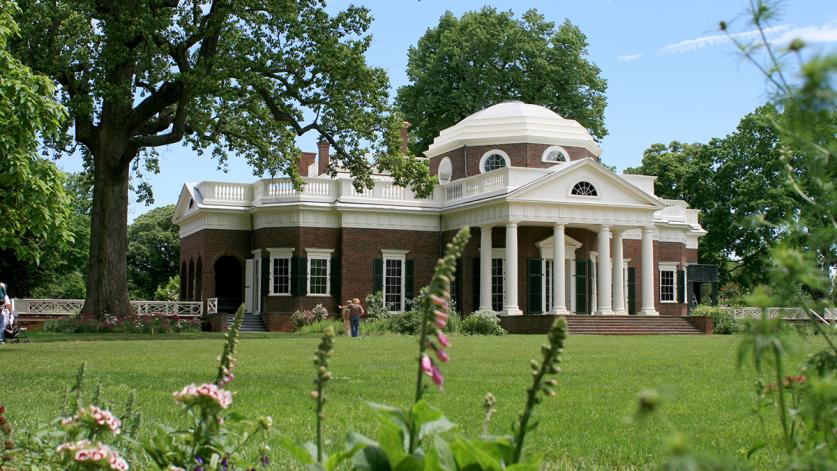
Although the UNESCO model of conservation encourages local partners to engage in reinterpretation, the organization does not have a protocol in place to periodically evaluate sites in lieu of a change in the historical narrative. Nevertheless, the World Heritage Center has established projects to recognize the difficult histories of some world heritage sites and to confer special designation on places associated with slavery. In 1994 UNESCO launched the Slave Route Project: Resistance, Liberty, Heritage, which aims to advance scholarship on the slave trade, slavery, and its abolition worldwide. The project also formulated a comprehensive list of guidelines, ranging from constitutional reforms for nations recognizing discrimination to methodological tools for site managers involved in the curation of the landscape. Although UNESCO does not mandate reinterpretation of designated sites to correct the historical record, the recent work by Monticello and UVA provide good examples of the curatorial creativity and participatory design needed to sensitively reconcile these difficult histories.
Since 1993, the Thomas Jefferson Foundation has incrementally worked to address Monticello’s role in profiting from the slave trade. Archaeological and documentary research on the plantation’s labor force has been ongoing since the 1950s, although the plantation’s enslaved workers were erroneously referred to as “servants.” Beginning in the 1980s, researchers and the site’s management made a concerted effort to address the issue of slavery directly and to modify the landscape to reflect this difficult history. In a 1993 exhibition marking the 250th anniversary of Jefferson’s birth, tours of Mulberry Row, the main house, and its outbuildings were modified to include these stories. Service areas, including the kitchen, chef’s bedroom, and wine cellar were restored to reflect the lives of the enslaved. Furthermore, to remain true to the foundation’s dual mission of preservation and education, Monticello’s Department of Archaeology conducted an archaeological survey and analysis of the plantation landscape, which was then restored to reflect the evolution of the plantation, the change in agricultural production methods over time, and the living conditions of enslaved laborers. The work included the reconstruction of a slave cabin, as well as the replanting of fruits, vegetables, trees, and plants that would have been extant in Jefferson’s time on a working and ornamental farm. Still other materials were prepared to introduce visitors to the African American graveyard. Notably, the reconstruction of enslaved dwellings reflected the precarity of the structures to the passage of time, in contrast to the sturdy construction of the main building.
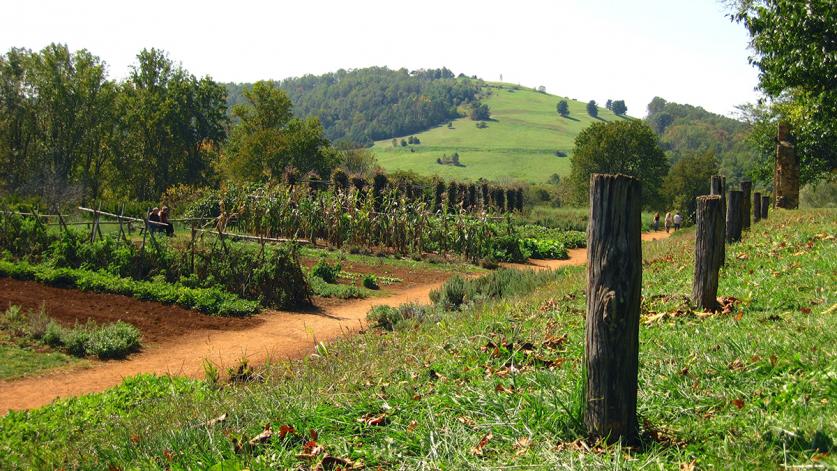
Unlike the work at Monticello, the reinterpretation of the UVA campus was a grassroots effort. For years, the truth of slavery as a part of the historic campus landscape was ignored and, even on occasion, denied. But the school’s history of slavery was foregrounded in a 2006 thesis, by UVA student Caroline O’Neale, titled “Slaves, Freedpeople, and the University of Virginia,” which was one of the first works of scholarship on the subject. The first enslaved people associated with the university worked to clear James Monroe’s cornfields in 1817, upon which the campus was established. Later that same year, additional laborers, including enslaved people, began building the campus, hauling the timber and firing the bricks used in the first buildings. Jefferson himself approved the purchase of some slaves, and eventually, the university had more than 100 enslaved persons working on the grounds, some owned and others leased from their owners. Besides the faculty, students, who typically came from slave-owning families, also brought enslaved persons with them, who resided on the grounds and were responsible for the daily upkeep of the buildings and the landscape. By the time O’Neale graduated, the university guides had established a “Slave to Scholar” tour. Later, in 2007, the Virginia General Assembly passed a resolution atoning for Virginia’s role in slavery, and soon the university followed suit. Scholars at UVA were independently setting up action groups to tackle racial equality and spearhead research on slavery.
For here we are not afraid to follow truth wherever it may lead. —Thomas Jefferson
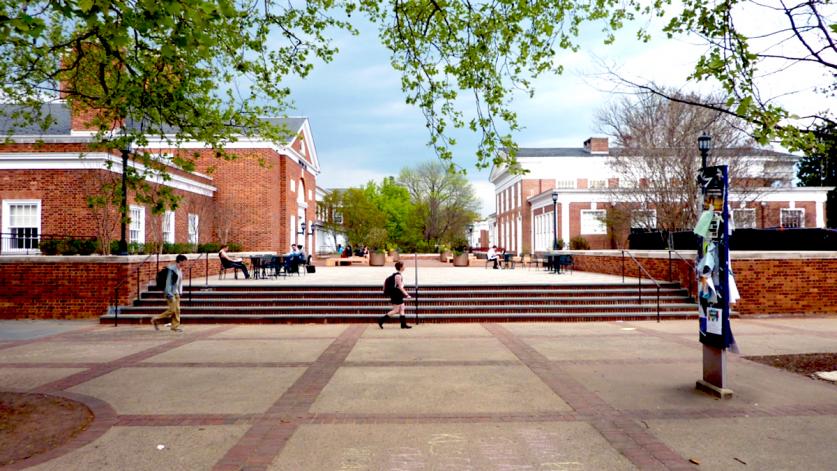
Frank Dukes, a professor of architecture at UVA and then-director of the Institute for Environmental Negotiation (IEN), received a grant in 2009 that led to the establishment of the University and Community Action for Racial Equity (UCARE). Student leaders used surveys, short presentations, informational forums, and focus groups to galvanize an emerging student movement that supported the establishment of a new memorial on the UVA grounds. The founding of the student group Memorial for Enslaved Laborers (MEL) in 2010 resulted in a design competition for a memorial being floated in 2011. The rapidly coalescing student mobilization around restorative justice led to the formation of the President’s Commission on Slavery and the University (PCSU) in 2013. Established to investigate the interpretation of historically significant buildings related to slavery, the commission also began to formulate research with Monticello that highlighted Jefferson’s relationship with slavery and proposed projects that could memorialize the enslaved laborers.
At a September 2016 meeting, the Boston-based firm of Höweler + Yoon was selected to design the new memorial in close collaboration with Dr. Mabel Wilson, an architectural historian at Columbia University and expert on race and the history of the built environment; Gregg Bleam, a landscape architect; and Frank Dukes of IEN. The team held several meetings with community groups and conducted student outreach before the design was conceptualized and approved. The memorial is currently under construction and is slated for completion in 2019. Notably, descendants of those enslaved at Monticello gave input on the design of the memorial.
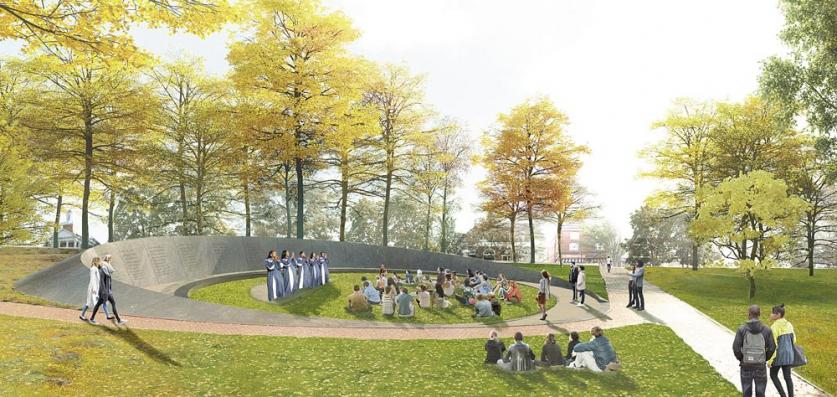
Situated on a lush incline known as the “Triangle of Grass” at the junction of University Avenue and Hospital Drive, the Memorial to Enslaved Laborers currently occupies a prominent place within the UNESCO World Heritage Site of the UVA. Nestled amid a grove of honey locusts just east of the Rotunda and built with ‘Virginia Mist’ granite, the structure references a broken shackle and the ‘Ring Shout,’ a dance practiced by enslaved people celebrating spiritual liberation. This is achieved by two concentric rings that part as the sloping walls meet the ground, thereby creating an entrance into the memorial. The interior granite wall rises to a height of eight feet and bears the inscriptions of the known and unknown names of the enslaved persons. The memorial is oriented tangentially to two paths—the first in the direction of the North Star, while the second aligns with the sunset on March 3, when UVA’s enslaved were emancipated by Union troops in 1865. Nearby lies a grove of gingko trees to commemorate the previously productive landscape cared for by the enslaved laborers and used for gatherings. A smaller inner concentric ring forms a bench for visitors to reflect as well as a stone scrim of water featuring a timeline of the history of slavery at UVA. The artwork on the outer granite ring by Brooklyn artist Eto Otitigbe will include an etched image of the eyes of Isabella Gibbon, a former slave who became a teacher after Emancipation.




